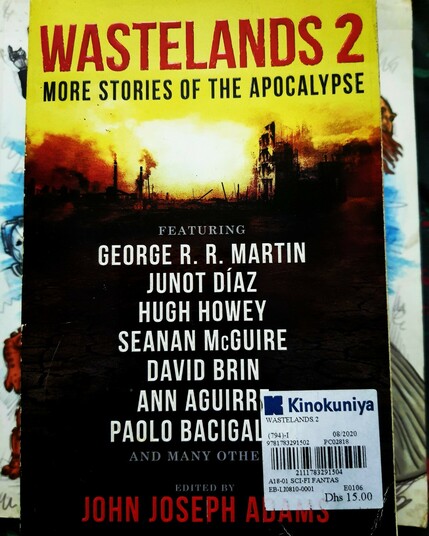I was googling interesting reading lists in Comparative Literature when I came across the Warwick University reading list for The Practice of Fiction.
According to the course syllabus, the following novels will serve as a masterclass in the study of the elements of fiction writing.
[Update: This course has been updated since I published this post and now includes different books. You can explore the current reading list for Practise of Fiction.]
For a closer look at entrances, openings, and beginnings:
A Heartbreaking Work of Staggering Genius by Dave Eggers (2000)
“Dave Eggers is a terrifically talented writer; don’t hold his cleverness against him. What to make of a book called A Heartbreaking Work of Staggering Genius: Based on a True Story? For starters, there’s a good bit of staggering genius before you even get to the true story, including a preface, a list of “Rules and Suggestions for Enjoyment of This Book,” and a 20-page acknowledgements section complete with special mail-in offer, flow chart of the book’s themes, and a lovely pen-and-ink drawing of a stapler (helpfully labeled “Here is a drawing of a stapler”). But on to the true story. At the age of 22, Eggers became both an orphan and a “single mother” when his parents died within five months of one another of unrelated cancers. In the ensuing sibling division of labor, Dave is appointed unofficial guardian of his 8-year-old brother, Christopher. The two live together in semi-squalor, decaying food and sports equipment scattered about, while Eggers worries obsessively about child-welfare authorities, molesting babysitters, and his own health. His child-rearing strategy swings between making his brother’s upbringing manically fun and performing bizarre developmental experiments on him. (Case in point: his idea of suitable bedtime reading is John Hersey’s Hiroshima.)” (GoodReads)
For a closer look at shapes and structures:
Gilead by Marilynne Robinson (2004)
“Twenty-four years after her first novel, Housekeeping, Marilynne Robinson returns with an intimate tale of three generations from the Civil War to the twentieth century: a story about fathers and sons and the spiritual battles that still rage at America’s heart. Writing in the tradition of Emily Dickinson and Walt Whitman, Marilynne Robinson’s beautiful, spare, and spiritual prose allows “even the faithless reader to feel the possibility of transcendent order” (Slate). In the luminous and unforgettable voice of Congregationalist minister John Ames, Gilead reveals the human condition and the often unbearable beauty of an ordinary life.” (GoodReads)
For a closer look at people and things:
Austerlitz by W G Sebald (2001)
“In 1967, the narrator bumps into a man in the salle de pas perdus of Antwerp’s Central Station. Thus begins a long if intermittent acquaintance, during which he learns the life story of this stranger, retired architectural historian Jacques Austerlitz. Raised as Dafydd Elias by a strict Welsh Calvinist ministry family, it is only at school that Austerlitz learns his true name–and only years later, by a series of chance encounters, that he allows himself to discover the truth of his origins, as a Czech child spirited away from his mother and out of Nazi territory on the Kindertransport. He returns to confront the childhood traumas that have made him feel that “I must have made a mistake, and now I am living the wrong life.” (GoodReads)
For a closer look at places and domains:
I Served the King of England by Bohumil Hrabal (1983)
“Sparkling with comic genius and narrative exuberance, I Served the King of England is a story of how the unbelievable came true. Its remarkable hero, Ditie, is a hotel waiter who rises to become a millionaire and then loses it all again against the backdrop of events in Prague from the German invasion to the victory of Communism. Ditie’s fantastic journey intertwines the political and the personal in a narrative that both enlightens and entertains.” (GoodReads)
For a closer look at voices:
Drown by Junot Diaz (1996)
“This stunning collection of stories offers an unsentimental glimpse of life among the immigrants from the Dominican Republic–and other front-line reports on the ambivalent promise of the American dream–by an eloquent and original writer who describes more than physical dislocation in conveying the price that is paid for leaving culture and homeland behind.” (GoodReads)
And finally, for a closer look at endings, finales, and conclusions:
Short Stories by Anton Chekhov
“The Best Stories of Anton Chekhov is an unforgettable journey through the complexities of the human heart. Celebrated as one of the greatest short story writers of all time, Chekhov’s masterpieces are given the difinitive treatment by editor John Kulka in this edition. Among the twelve stories included here are some of Chekhov’s most famous and celebrated “The Lady with the Dog,” “The Darling,” and “Peasants” as well as a few less familiar though equally accomplished masterpieces. All of the stories in this round-up reveal Chekhov as a master of storytelling.” (GoodReads)
Save
https://lilolia.wordpress.com/2014/01/20/a-writers-fiction-reading-list/
#AntonChekhov #BohumilHrabal #DaveEggers #Fiction #JunotDiaz #MarilynneRobinson #ReadingList #WGSebald #Writing


